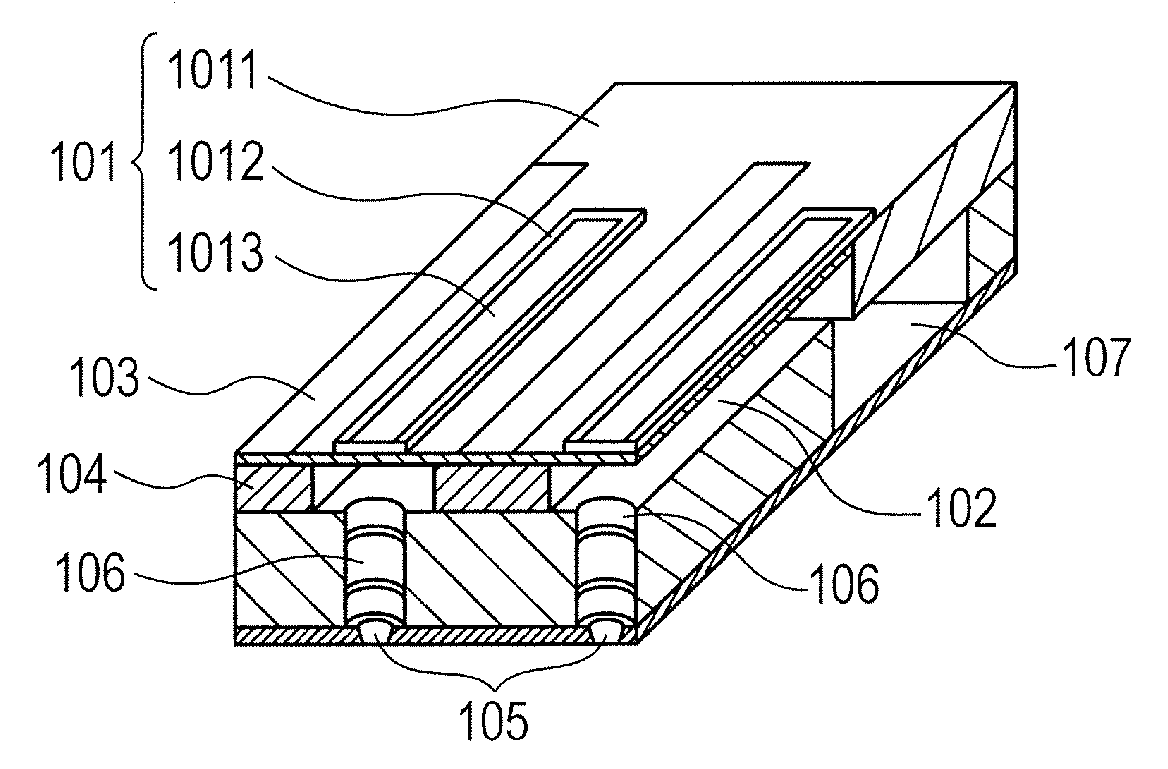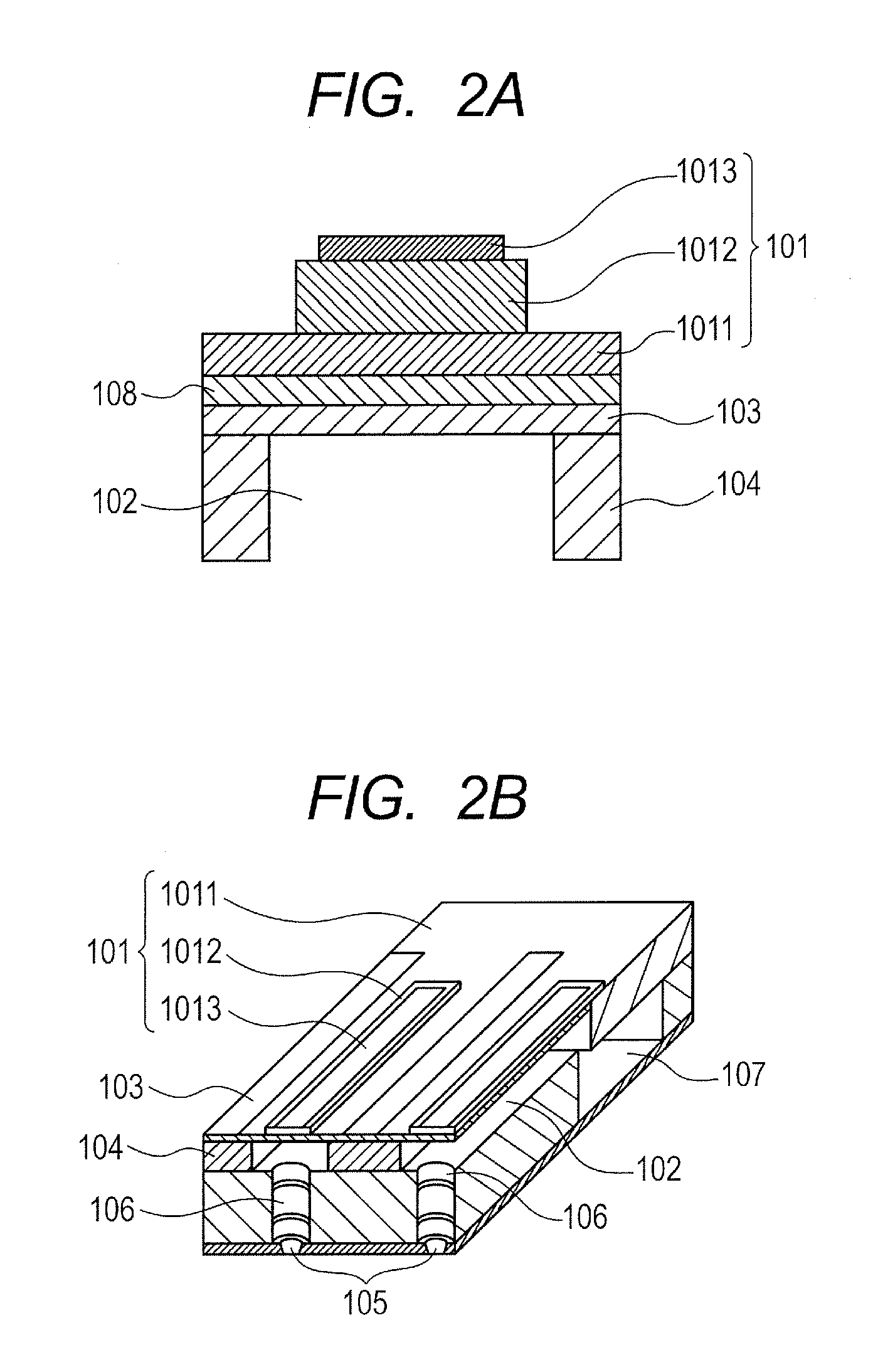Piezoelectric element, liquid discharge head and liquid discharge apparatus
a liquid discharge head and piezoelectric element technology, applied in piezoelectric/electrostrictive devices, piezoelectric/electrostrictive/magnetostrictive devices, device material selection, etc., can solve the problems of polarizing bi, unclarified piezoelectric performance, environmental impact of lead components, etc., to achieve excellent interlayer adhesion, large piezoelectric strain, and small effect on environmen
- Summary
- Abstract
- Description
- Claims
- Application Information
AI Technical Summary
Benefits of technology
Problems solved by technology
Method used
Image
Examples
examples
[0122]Now, the present invention is described more specifically by way of examples. However, the present invention is not limited by the following examples.
examples 1 to 26
[0123]Metal oxide thin films having compositions corresponding to the respective examples of Table 1 were each formed on a substrate by an intermittent metal organic chemical vapor deposition method (MOCVD method).
[0124]As the substrate on which the thin films were formed, a commercially available silicon substrate (with a 1 μm-thick SiO2 oxide film) was used. On the surface of the substrate, a titanium oxide (TiOx) layer was formed as an adhesion layer by a sputtering method so as to have a thickness of 10 nm or less. Further, naturally (111)-oriented platinum (Pt) having a thickness of 80 to 200 nm was formed by the sputtering method in the same batch, thereby obtaining a first electrode layer. The substrate heat temperature for the sputtering film formation of TiOx and Pt was set to 250° C.
[0125]On the surface of the first electrode layer, uniaxially (111)-oriented strontium ruthenate (SrRuO3) in pseudo-cubic notation having a thickness of 10 to 40 nm was formed as a second elect...
examples 27 to 37
[0139]Piezoelectric films having compositions corresponding to the respective examples of Table 2 were each formed on a substrate by a pulse laser deposition method (PLD method).
[0140]As the substrate on which the thin films of Examples 27 to 37 were formed, a silicon substrate with a lower electrode similarly to Examples 1 to 26 was used. In other words, a silicon substrate with an oxide film was used, which had uniaxially (111)-oriented strontium ruthenate (SrRuO3) in pseudo-cubic notation having a thickness of 10 to 40 nm as the second electrode and naturally (111)-oriented platinum (Pt) having a thickness of 80 to 200 nm as the first electrode layer.
[0141]Used as a target material on which pulse laser was incident was a pellet obtained by: mixing Bi2O3, La2O3, Sm2O3, ZnO, MgO, TiO2, and Fe2O3; pulverizing the mixture; pre-baking the pulverized product in an electric furnace at 750° C. for 5 hours; further adding 10 wt % of PVB to the pre-baked powder; molding the mixture; and po...
PUM
 Login to View More
Login to View More Abstract
Description
Claims
Application Information
 Login to View More
Login to View More - R&D
- Intellectual Property
- Life Sciences
- Materials
- Tech Scout
- Unparalleled Data Quality
- Higher Quality Content
- 60% Fewer Hallucinations
Browse by: Latest US Patents, China's latest patents, Technical Efficacy Thesaurus, Application Domain, Technology Topic, Popular Technical Reports.
© 2025 PatSnap. All rights reserved.Legal|Privacy policy|Modern Slavery Act Transparency Statement|Sitemap|About US| Contact US: help@patsnap.com



